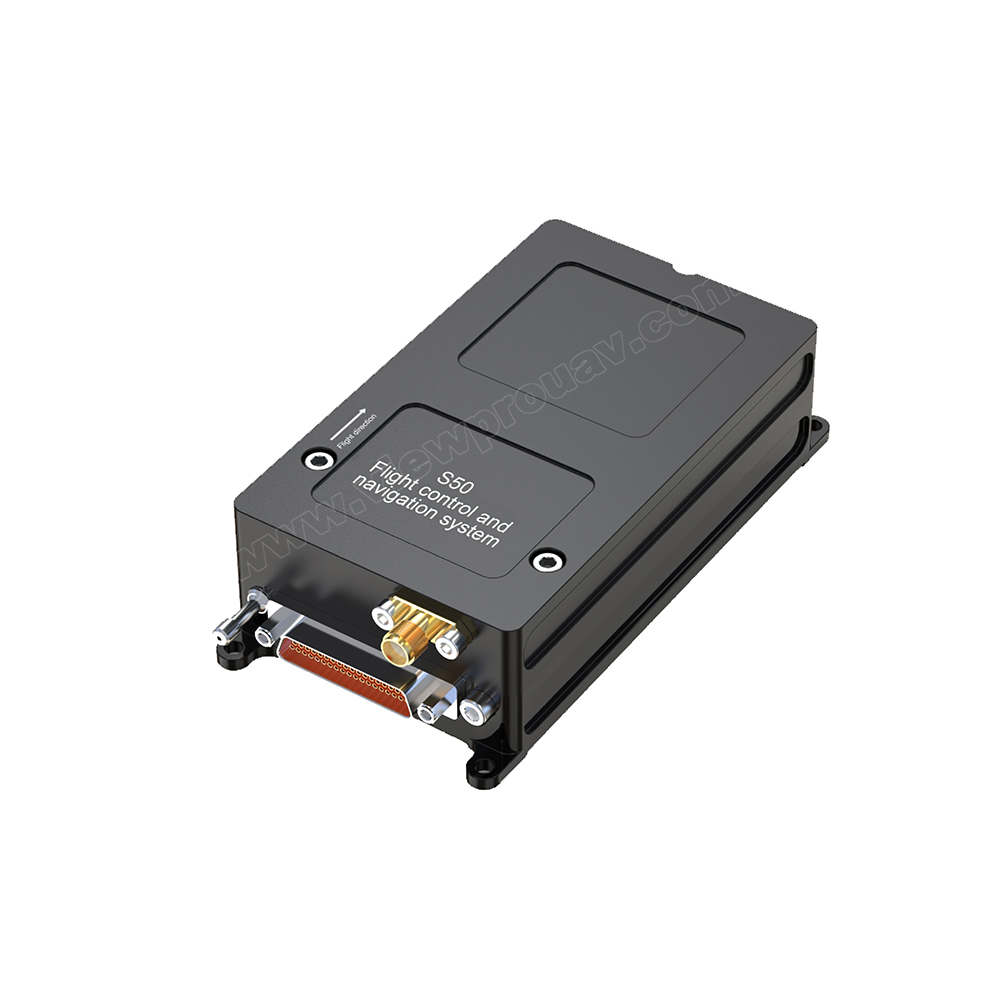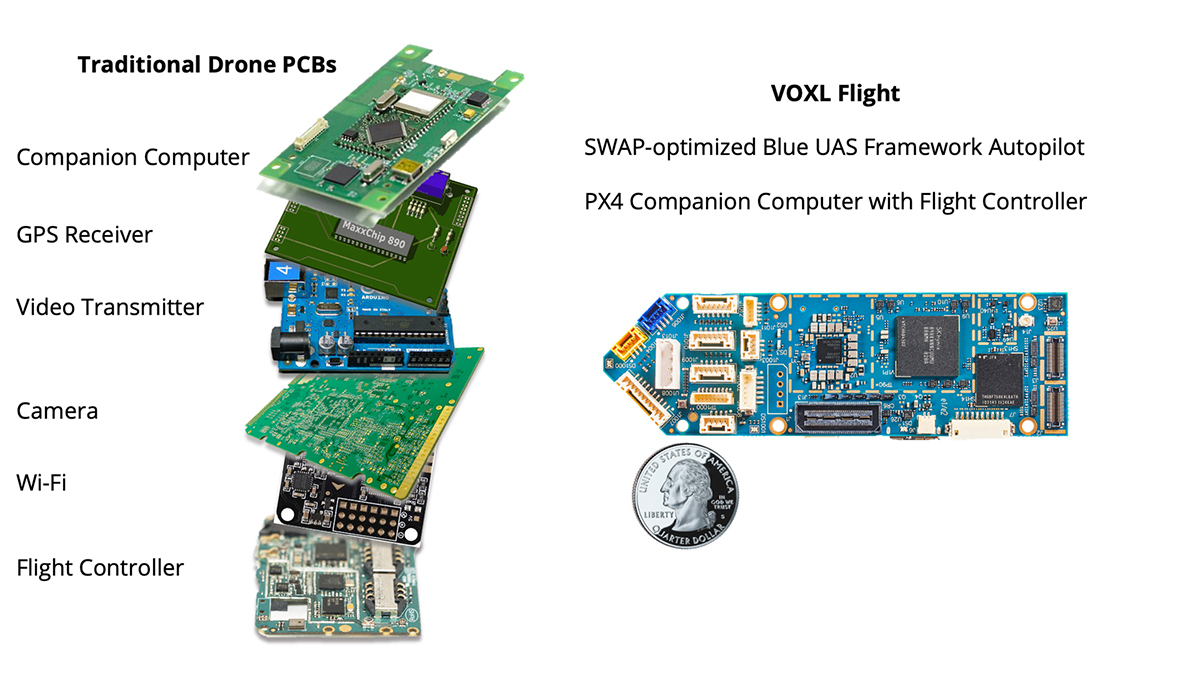SparkNavi Drone Flight Controller and GNSS/INS Made in Taiwan: Blazing A Trail in Drone Modern Technology
SparkNavi Drone Flight Controller and GNSS/INS Made in Taiwan: Blazing A Trail in Drone Modern Technology
Blog Article
Discovering the Function of Drone Trip Controllers in Enhancing Trip Stability and Navigation Efficiency
The development of drone modern technology has dramatically increased the relevance of flight controllers, which serve as the mind of these aerial cars. By integrating real-time information from a variety of sensing units, flight controllers boost trip security and navigating performance, making certain that drones can operate efficiently also in complicated settings.

Understanding Flight Controllers
Trip controllers are integral components in the functioning of drones, working as the brains that maintain and take care of trip procedures. These innovative gadgets procedure information from various sensors, consisting of accelerometers, gyroscopes, and GPS, to make sure that the drone maintains its desired trip course. The flight controller interprets this information and executes commands based on pre-defined algorithms, allowing the drone to respond to environmental modifications, such as wind or challenges.
The key feature of a flight controller is to preserve stability during trip. It accomplishes this by making real-time adjustments to the drone's motors and control surface areas, making sure balance and control. Additionally, modern flight controllers integrate innovative features such as waypoint navigating, enabling automated flight paths and improved functional efficiency.
Recognizing the architecture of flight controllers is critical for both enthusiasts and experts. They typically include a microcontroller, firmware, and various interfaces for sensing unit input and communication. As modern technology advancements, trip controllers have come to be extra compact and capable, incorporating expert system to adapt and improve decision-making processes to intricate flight circumstances. This advancement indicates a pivotal development in the drone sector, leading the way for more advanced applications and safer operations.
Key Elements of Flight Stability
Achieving optimal trip security in drones counts on numerous key elements that operate in show to guarantee regulated and smooth procedures. Central to this security is the trip controller itself, which refines data from numerous sensors to maintain the preferred trip attitude. This includes accelerometers and gyroscopes that determine motion and orientation, enabling for real-time modifications to the drone's position.
Another crucial element is the electronic rate controllers (ESCs), which manage the power supplied to the electric motors. By carefully adjusting electric motor rates in response to trip controller commands, ESCs assist keep equilibrium and combat disruptions caused by wind or sudden motions.
Furthermore, the design of the drone's framework plays a crucial function in trip stability. A well-structured framework lessens vibrations and boosts the overall aerodynamic account, adding to smoother trip features. Ultimately, the combination of advanced algorithms within the trip controller aids in anticipating modifications, making sure a adaptable and receptive trip experience.
Together, these parts create a natural system that boosts a drone's security, enabling exact maneuvering and boosted efficiency in numerous trip conditions.
Navigating Efficiency Methods
Performance in navigating is important for enhancing drone operations, specifically in intricate settings. Effective navigating methods enhance the ability of drones to pass through tough surfaces and avoid obstacles, thus boosting operational efficiency and safety.
One popular strategy is the execution of innovative GPS and inertial dimension units (IMUs) that provide specific place monitoring and orientation data. These modern technologies enable drones to determine ideal trip paths in real-time, considering numerous variables such as wind conditions and potential barriers.
One more technique includes making use of algorithms for course planning and optimization. Algorithms such as A * and Dijkstra's algorithm can be released to determine the most effective path while lessening energy intake read this and flight time. Moreover, integrating equipment discovering designs can allow drones to adaptively learn from their settings, improving navigation capacities through experience.

Effect On Autonomous Drones
The integration of advanced navigating strategies has More about the author profoundly transformed the capabilities of autonomous drones, allowing them to operate with greater freedom and accuracy. SparkNavi drone flight controller and GNSS/INS made in taiwan. These enhancements are primarily credited to innovative trip controllers that utilize real-time data handling and sensing unit combination, permitting drones to browse intricate settings effortlessly
The influence on independent drones prolongs past plain navigating; it encompasses enhanced obstacle avoidance, improved stability throughout vibrant conditions, and boosted goal reliability. By leveraging formulas that incorporate machine understanding and artificial intelligence, drones can adjust to changing scenarios, making informed choices that optimize their trip paths while reducing threats.
In addition, the implementation of durable trip controllers has actually assisted in the implementation of intricate jobs, such as airborne evaluations, distribution solutions, and agricultural surveillance, with minimal human treatment. This ability not only enhances procedures yet additionally decreases human mistake, thus boosting general security.
Because of this, the functional range of autonomous drones has broadened considerably, making them crucial tools in numerous sectors. Their capability to do effectively in diverse circumstances emphasizes the essential function that progressed flight controllers play in forming the future of unmanned airborne systems.
Future Patterns in Flight Control
Regularly, developments in flight control innovation are positioned to redefine the landscape of drone operations in the coming years. Arising trends indicate a significant shift towards improved man-made knowledge (AI) combination, making it possible for trip controllers to process real-time information much more efficiently. This advancement will certainly assist in enhanced decision-making capabilities, enabling drones to adapt to dynamic environmental conditions autonomously.
Moreover, the implementation of check it out equipment knowing formulas is anticipated to boost predictive upkeep, consequently minimizing downtime and extending the lifecycle of drone elements. This positive approach to upkeep will certainly be vital as drone applications expand throughout various industries, from farming to logistics.

.png)
Lastly, improvements in safe interaction methods will certainly deal with safety and security and regulatory problems, ensuring that drones can operate flawlessly in congested airspaces (SparkNavi drone flight controller and GNSS/INS made in taiwan). Collectively, these patterns direct towards a future where trip control systems are not just smarter and much more likewise capable but efficient of operating safely in a significantly incorporated airspace
Final Thought
Finally, drone flight controllers are indispensable to enhancing flight security and navigation performance via the sophisticated handling of sensing unit data. By maintaining ideal flight mindsets and using advanced algorithms for course optimization and challenge avoidance, these controllers substantially add to the freedom and functional safety and security of drones. As modern technology proceeds to evolve, further developments in flight control systems are prepared for, guaranteeing enhanced performance and expanded abilities in the realm of unmanned aerial cars.
By integrating real-time data from a variety of sensors, trip controllers improve flight security and navigating efficiency, making sure that drones can run efficiently even in complicated environments.Trip controllers are important parts in the performance of drones, serving as the minds that maintain and handle trip operations. Furthermore, modern-day flight controllers incorporate advanced functions such as waypoint navigation, permitting for automated trip courses and boosted operational effectiveness.
Central to this stability is the flight controller itself, which refines data from various sensors to maintain the preferred trip mindset.In final thought, drone flight controllers are indispensable to improving flight security and navigation efficiency via the innovative processing of sensing unit information.
Report this page